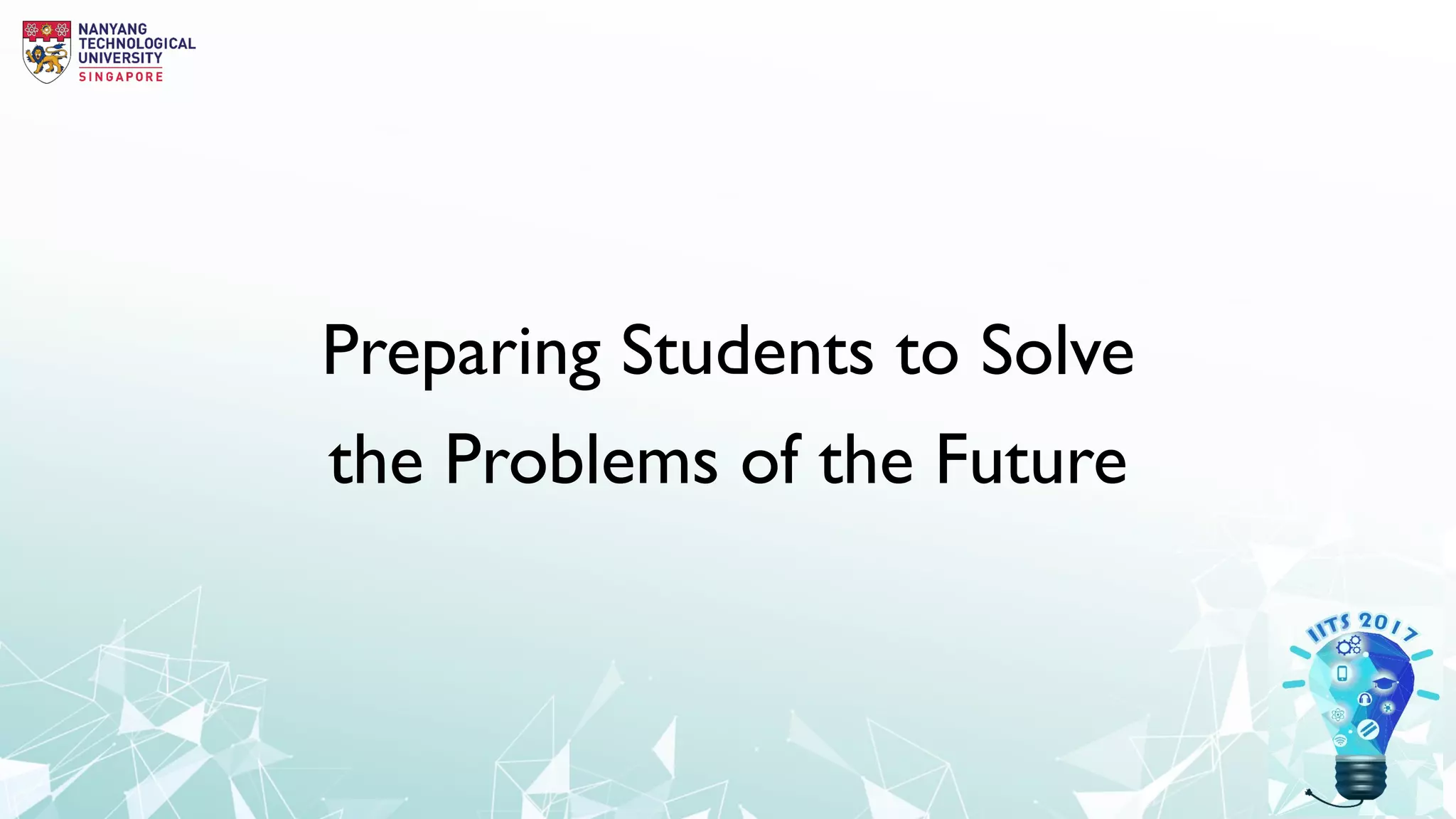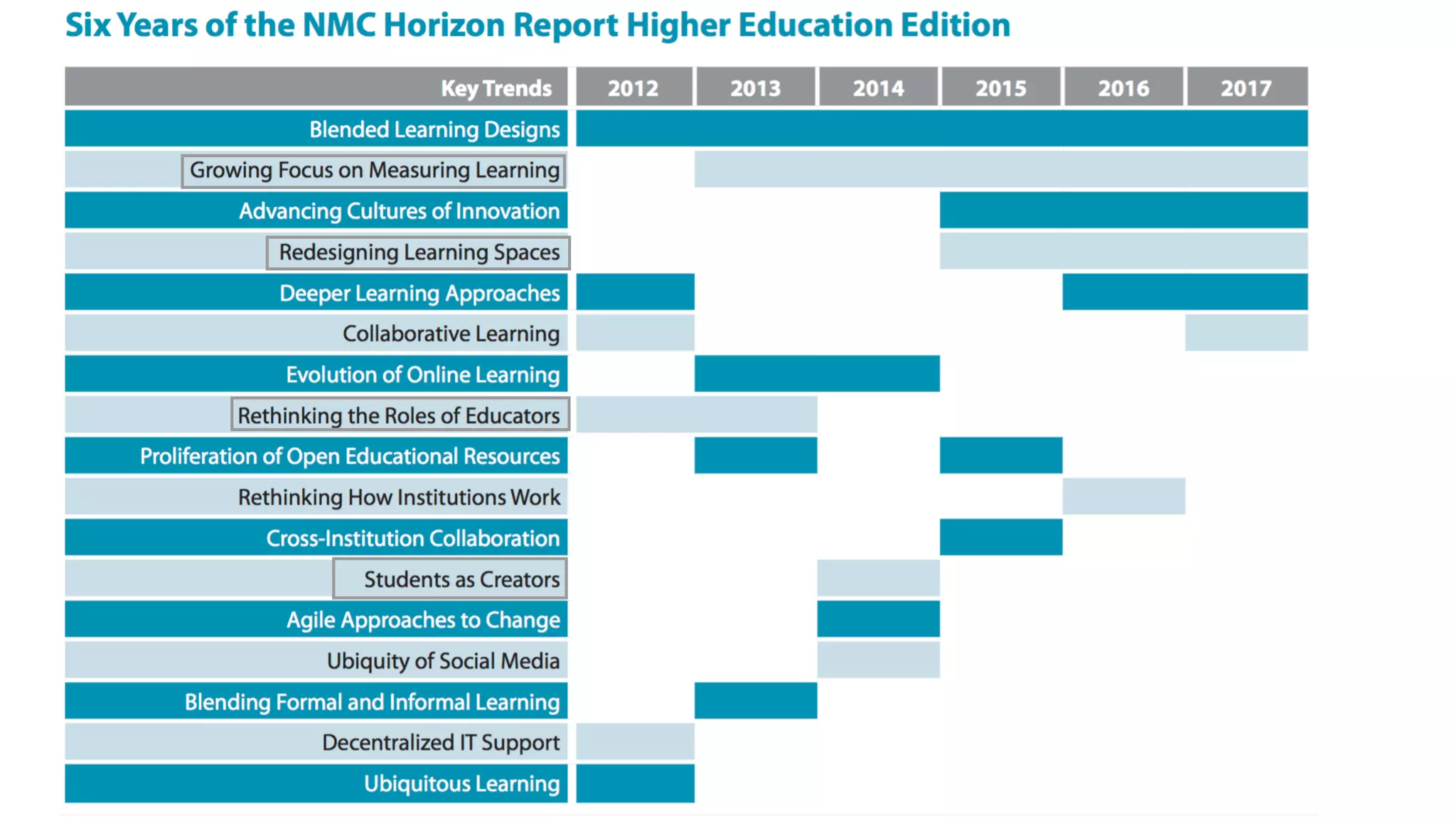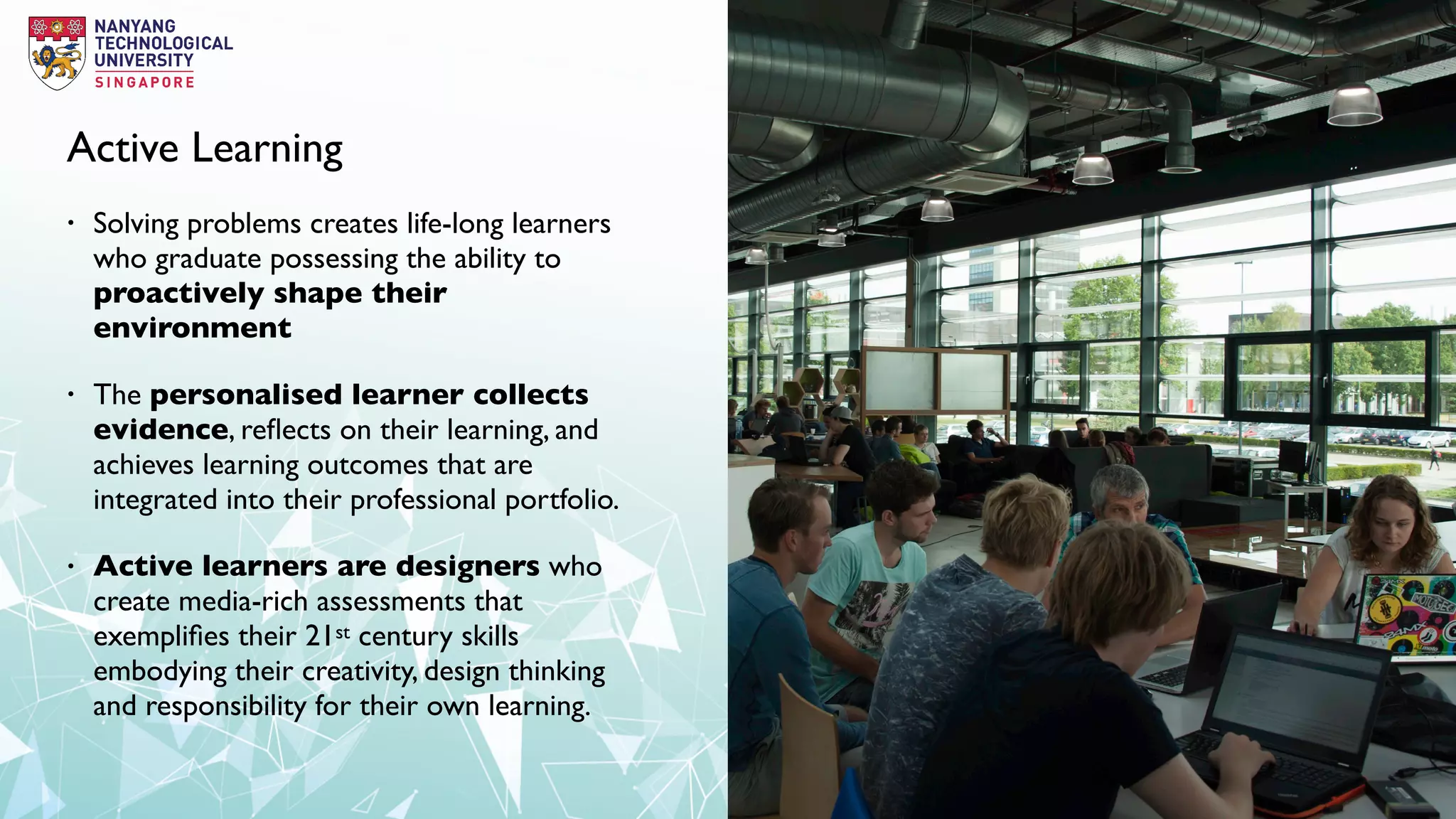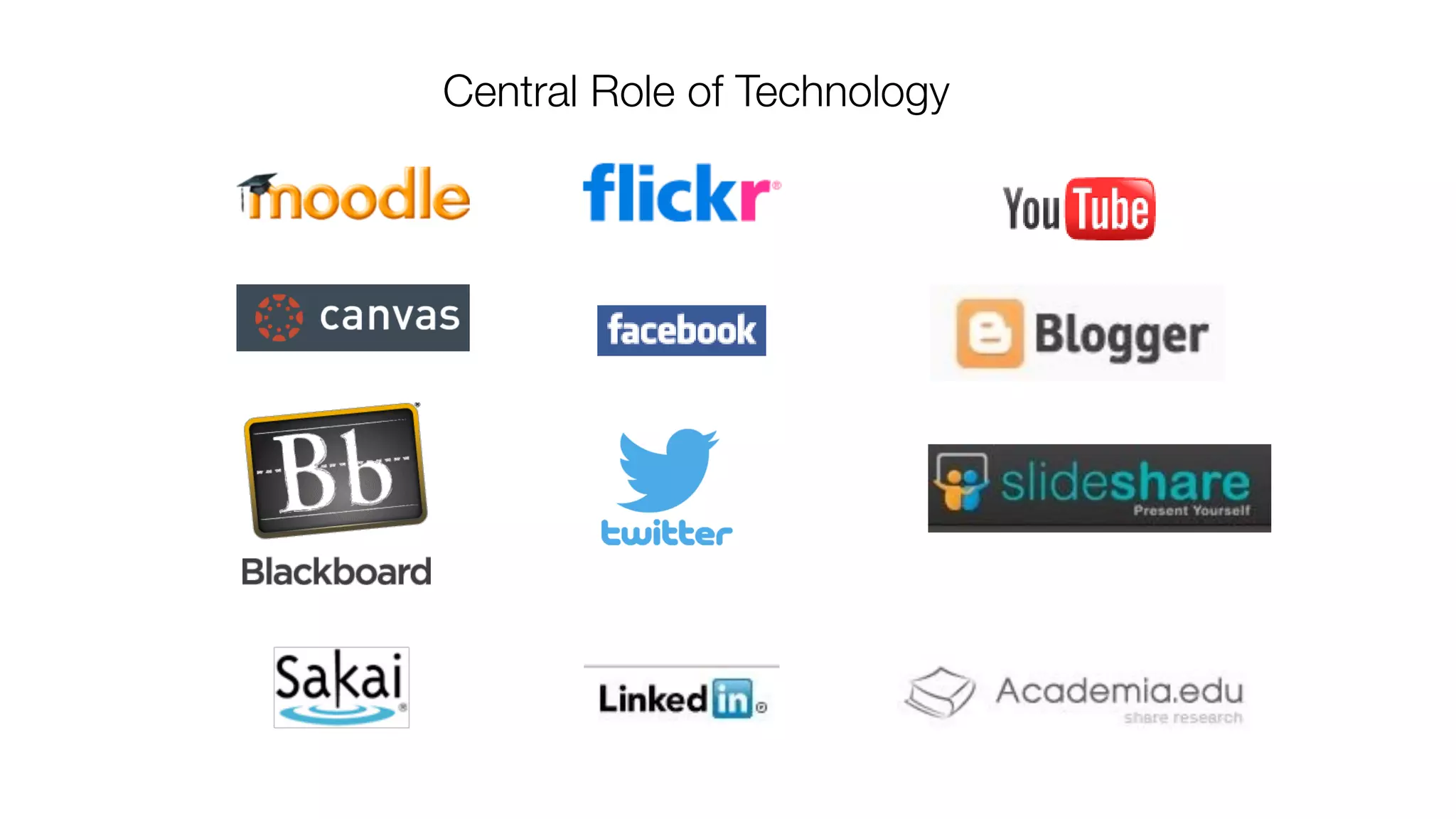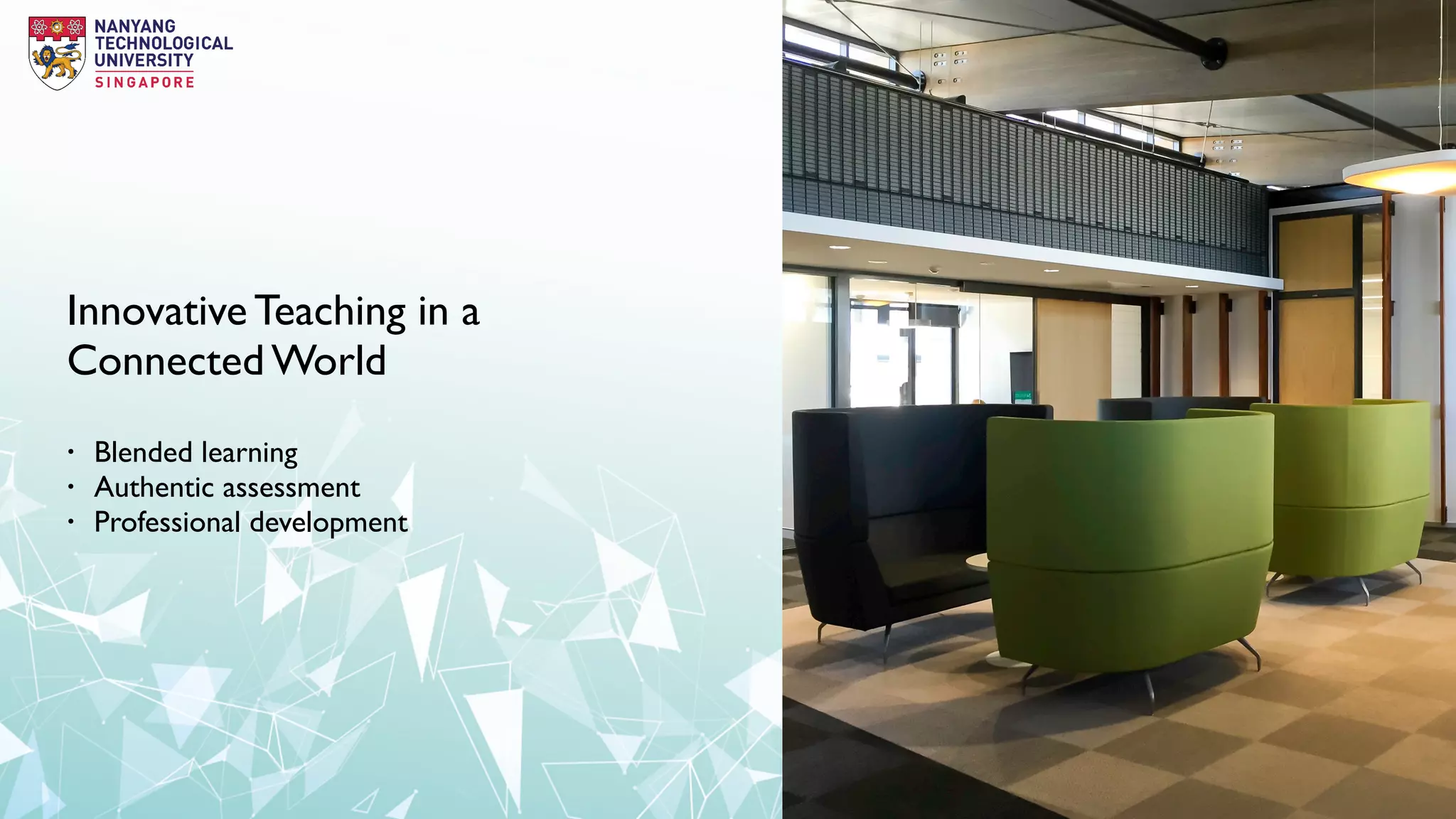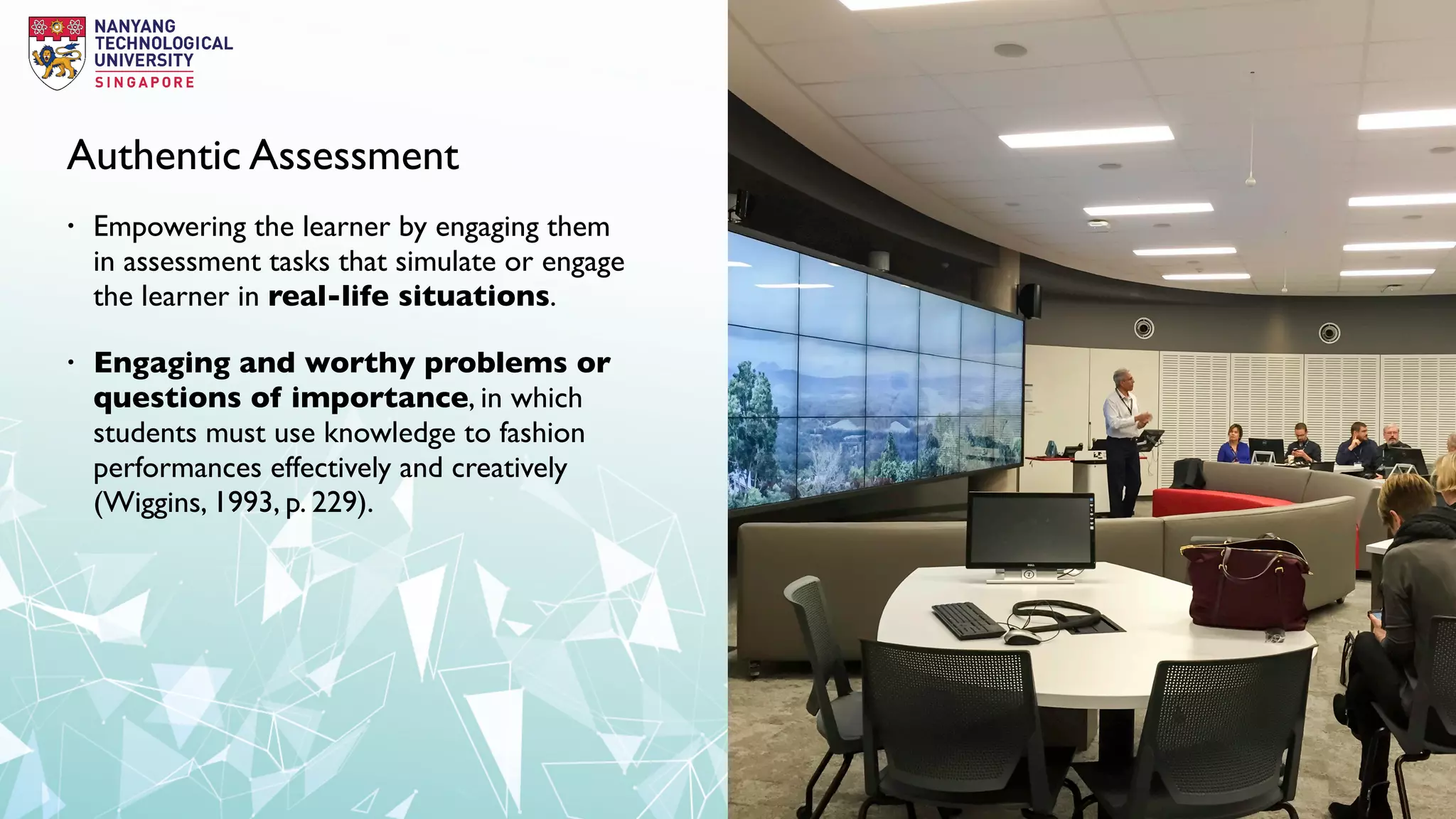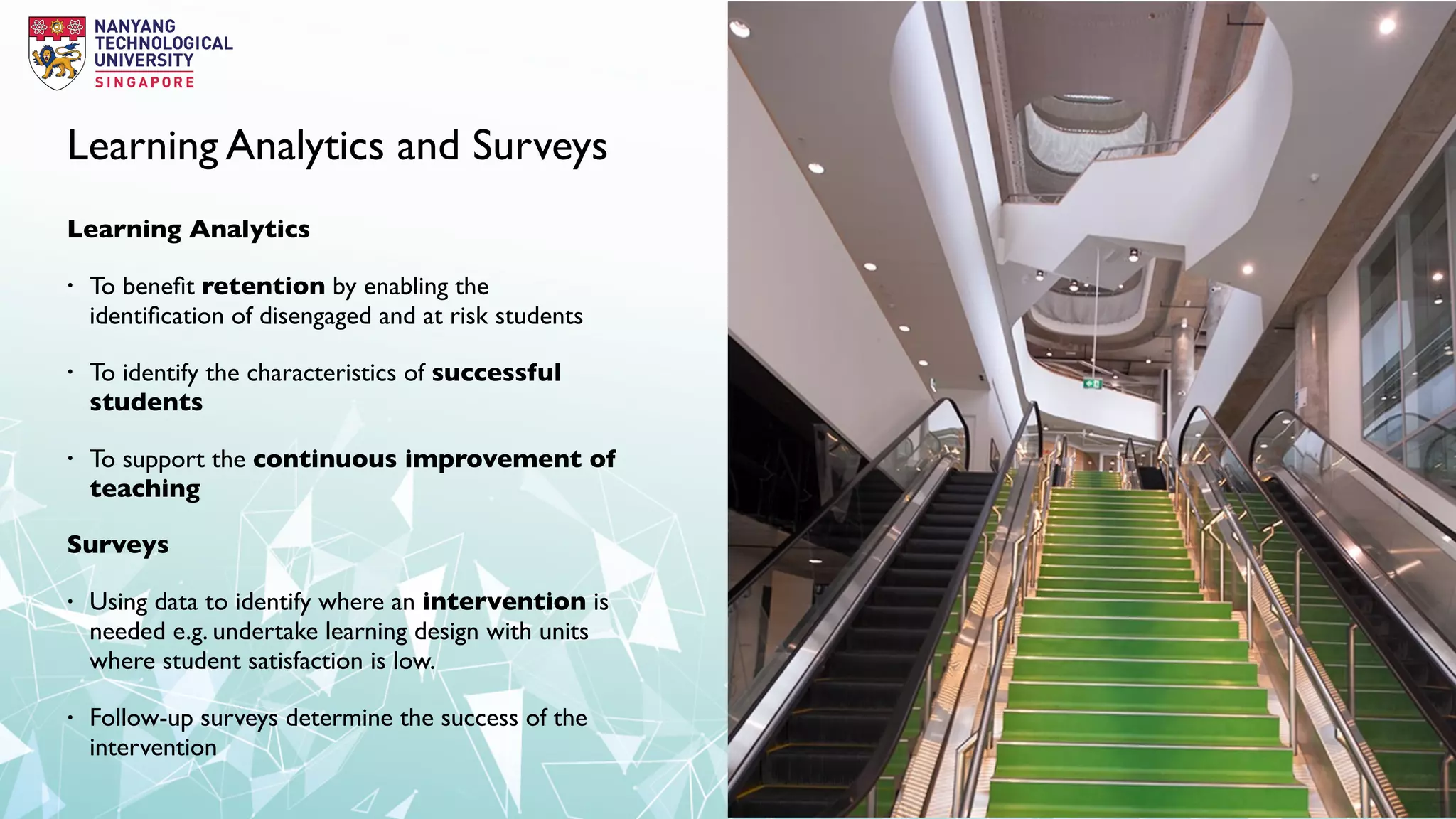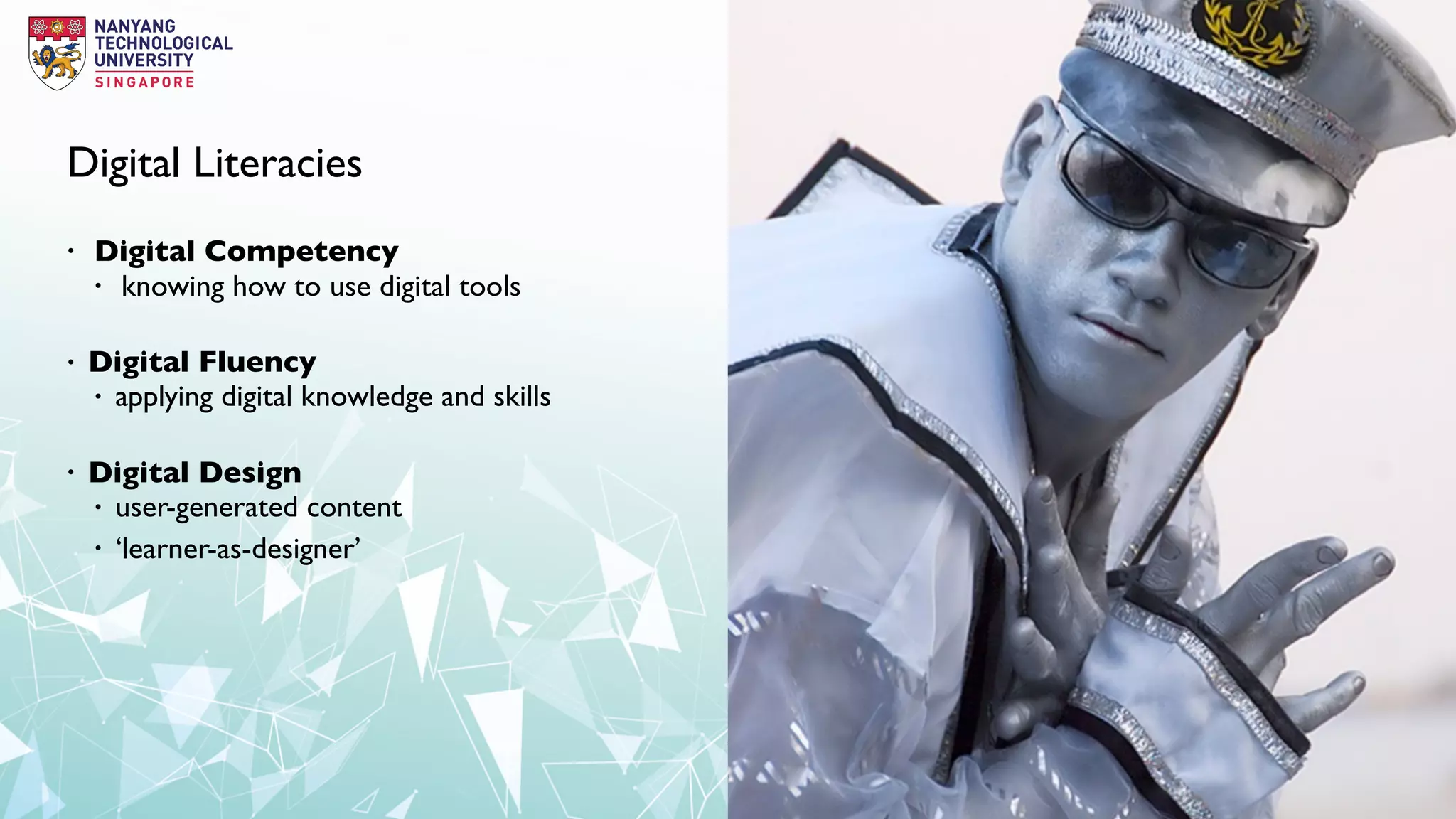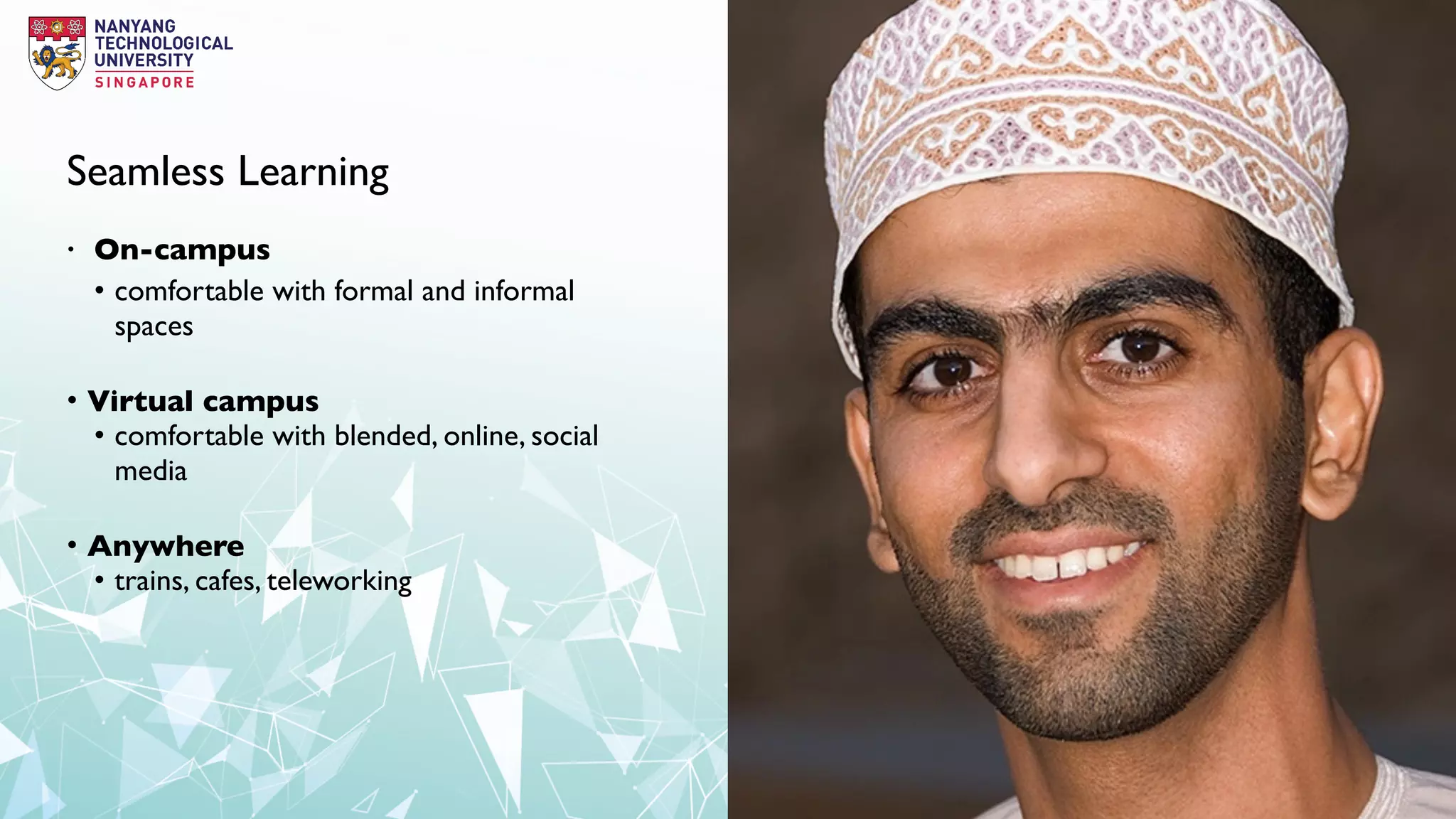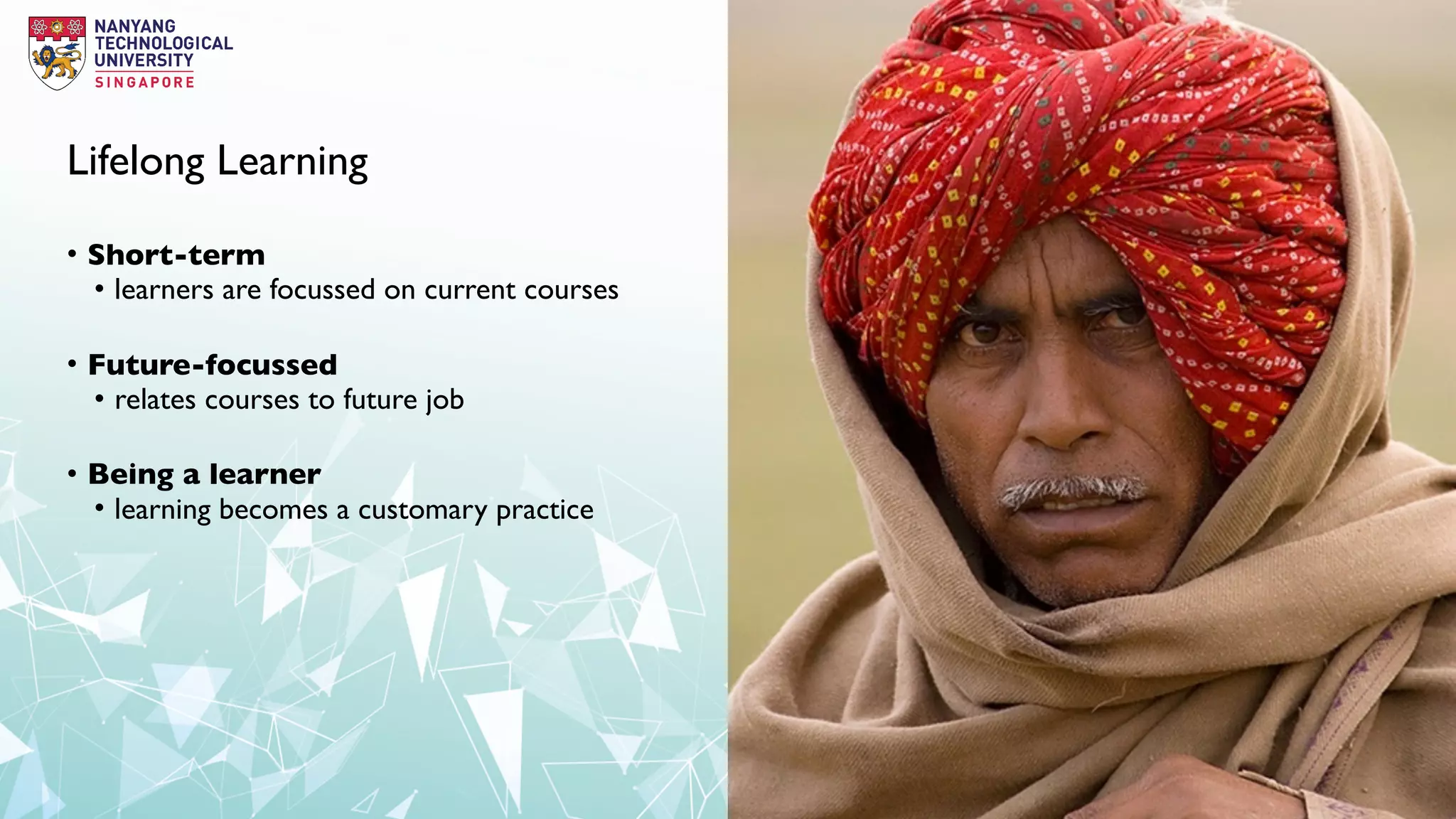The Innovations in Teaching Seminar held on October 3, 2017, explored how technology enhances learning through active and authentic educational practices, with keynote speaker Professor Mike Keppell emphasizing the importance of digital fluency and personalized learning. The event focused on the evolving role of educators and learners in a connected world, the design of learning spaces, and the integration of blended learning and assessment strategies. Key themes included the need for institutions to adapt to the demands of a digitally fluent and self-regulated learner, fostering seamless learning experiences and lifelong learning pathways.


